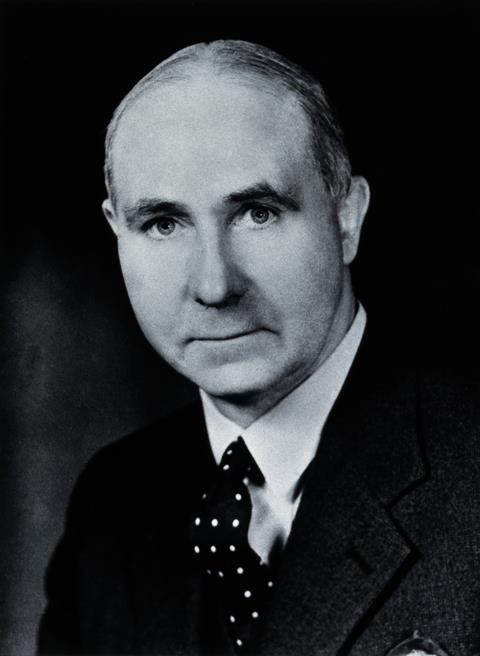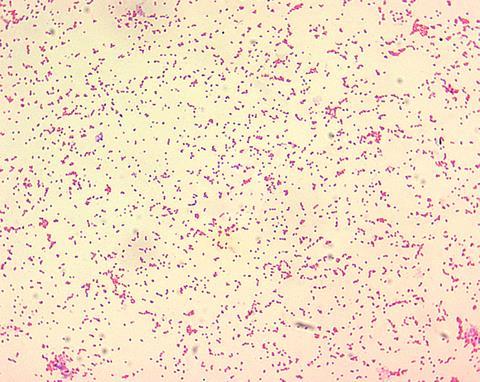As a PhD student at Manchester University it was thought that, having graduated in chemistry, my knowledge of microbiology would be sparse and in need of improvement (a remarkably prescient insight endorsed by others since).
I was therefore required to attend lectures on a Diploma Course in Bacteriology, unaware at the time that one of its founders nearly fifty years previously was arguably the most influential British microbiologist of the 20th century, and one whose career was mostly based in London.
Sir Graham Wilson (he was knighted in 1962) was born in Newcastle in 1895 but the family moved south to Surrey from where he later attended Kings College before joining Charing Cross Hospital Medical School. It was here he first encountered Professor W.W.C. Topley who recognised Wilson’s ability and acted as an early mentor, encouraging publication of his first research paper in 1917 on the serological diagnosis of typhoid fever. Wilson’s medical training was shortened due to World War I and he graduated in 1916 spending the next two years at the Enteric Laboratory in the Indian hill town of Kasauli. After the war and a short period at the Royal Army Medical Corps College in London, Wilson reunited with Topley at Charing Cross Hospital studying the genesis of epidemics in caged mice.

When Topley moved to the University of Manchester in 1923, Wilson followed as lecturer – a move that served to focus his career on public health. Here he started work on the hygienic quality of milk and its association with the transmission of disease, particularly tuberculosis and brucellosis. He was the first to isolate Brucella abortus from milk in Britain and became an advocate of milk pasteurisation as an essential public health measure. The laboratory in Manchester, like several others in large towns and cities in the UK, supplied services to local municipal public health departments and it was recognition of the need for trained senior staff that led Manchester University to introduce the UK’s first full time, postgraduate Diploma Course in Bacteriology.
In 1927 both men returned to London to the newly established London School of Hygiene and Tropical Medicine (LSHTM) where Topley was Professor of Bacteriology and Wilson, initially Reader, was promoted to Professor of Bacteriology Applied to Hygiene in 1930. Here they established a second Diploma Course in Bacteriology supported by publication in 1929 of the landmark text, Principles of Bacteriology and Immunity (by 2007 an 8-volume work in its 10th edition).
In London, Wilson continued work describing the hazards associated with raw milk, the social toll they exacted and their control. In support of this, he convened a group of experts which met at the LSHTM in the 1930s and forcefully recommended the pasteurisation and tuberculin testing of milk. He was also lead author of an extensive Medical Research Council report in 1935: The bacteriological grading of milk which inter alia promoted the methylene blue dye reduction test as an alternative to plate counts for grading milk.

At the start of World War II Wilson was seconded to the Oxford laboratory of the Emergency Public Health Laboratory Service (EPHLS) which had been established to deal with the anticipated public health consequences of mass bombing and the possibility of germ warfare. In 1941 he was appointed Director of the Service. Though the bleak predictions of epidemics did not materialise, the wartime EPHLS proved its worth sufficient for the Public Health Laboratory Service (PHLS) to become part of the NHS in 1946, with Wilson as its Director, a post he held until 1963.
His capacity for work was awe-inspiring. In what was described as a benign dictatorship he oversaw a trebling of the number of PHLS laboratories to around 60, actively participating in the detailed design of many. Every laboratory received an annual visit from the Director, with the exception of the Central laboratory at Colindale in North London which he visited every two weeks. He also found time to review and pre-edit all publications emerging from the new organisation shaping its scientific development and its considerable international prestige.
His own research covered a huge range of issues associated with public health including some lesser known investigations. These include the bacteriological condition of unused canned foods taken on expeditions in the 1820s in search of the Northwest Passage and the hygienic implications of the introduction of soft toilet paper for the Civil Service.

He was an enthusiastic cyclist who would routinely cycle the 6 miles from his home in Highgate to the PHLS headquarters when they were housed in Westminster. It was said his bicycle was a familiar sight in the porch of the Athenaeum Club in nearby Pall Mall where he often lunched. Into his eighties he maintained a personal commitment to cycle 100 miles on or near his birthday. Around this time, at the age of 86, he lectured on the WHO Advanced Food Microbiology Course held at the University Surrey and would bring his bicycle on the train from Waterloo and cycle up the steep hill to the University before giving his talk.
Accounts suggest that his very meticulous and serious approach to work belied a more gregarious side when ‘off duty’, but it does appear that levity was generally restricted to out of hours. One story hinting that this may not have always been the case is recounted in a Royal Society Biographical Memoir.
It appears that Wilson had become irritated seeing students in laboratory classes waving their flamed loops around to cool them. On one occasion he asked an offender whether he knew how long it took a loop to cool. ‘No sir’ replied the student. ‘Five seconds’ came the answer. Seeing apparent disbelief Wilson took the loop, flamed it and held it steady while counting up to five. He then took the loop between thumb and forefinger when there was a faint hiss and a tiny wisp of smoke rose. ‘Six seconds for the heavier gauge’ was his impassive comment.








No comments yet